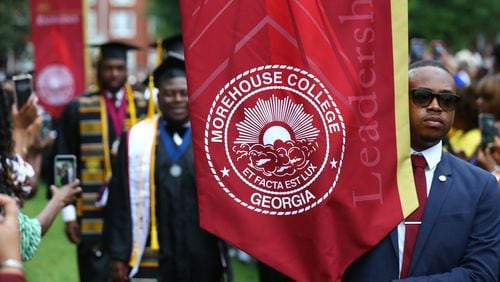I have written before about the special fervor with which school-choice opponents attack tax-credit scholarships in Georgia and other states. The latest example is a “study” by the national lobbying arm of school superintendents.
The operative word here is “lobbying.” The School Superintendents Association does not want Congress to enact its own tax-credit scholarship, as proposed by Sen. Marco Rubio, R-Florida, and Rep. Todd Rokita, R-Indiana. So it portrays these scholarships as a “School Voucher Tax Shelter” for wealthy taxpayers.
Is this true? Suffice it to say, if this is the best “tax shelter” your accountant can find, you need a new accountant.
First, here’s how these scholarship donations work. In Georgia and several other states, donors receive a dollar-for-dollar state tax credit for these gifts and can claim them on their federal taxes as charitable contributions. But that claim is offset by a corresponding decrease in state taxes paid, which are also deductible, making it a wash for their federal tax liability. No “profit” there.
The same is not true for those subject to the alternative minimum tax, or AMT. To understand why it’s disingenuous to say these taxpayers are “profiting,” let’s review how AMT payers are treated differently.
Start with the fact the AMT exists to raise taxes on some Americans. These Americans typically qualify for more tax deductions than others with similar incomes; the AMT raises their taxes by taking away some of those deductions.
This is curious because, generally speaking, the reason Congress creates tax deductions is to encourage people to do certain things. You might think someone who qualifies for a lot of deductions by doing a lot of those things would get some kind of bonus tax break, or maybe a medal — not a tax hike. But that’s Congress for you.
So we are talking about people who pay more taxes, thousands of dollars more in some cases, than others with the same income, because they did too many of the things Congress encouraged them to do. But as Congress isn’t completely cold-hearted, it allows them to keep some deductions. That includes the one for charitable donations, but not the one for state or local taxes paid.
Enter the tax-credit scholarships. Donors to these programs can deduct them as charitable contributions, without realizing an offsetting increase in their taxable income. But that’s because they don’t get the deduction for state and local taxes. They’re paying more taxes on their income, remember? And because the vast majority of AMT payers will still owe some state or local tax, which they still can’t deduct, they’ll still pay more than a similarly situated non-AMT payer. This “profit” of which the “study” speaks, then, is akin to Congress saying it is “cutting spending” when in reality it’s just increasing spending more slowly than before. It’s best understood as a reduction in the penalty the AMT imposes. And there is a price for this reduction: The donations must be made more than a year before the taxpayer can claim the state credit or federal deduction. Their money is tied up that entire time. Some “profit.”
But wait: This “loophole” is not only for tax-credit scholarships. It applies to any charitable contribution for which there’s a state tax credit or deduction.
Here you might ask: Didn't the "study" say this was about "School Voucher Tax Shelters?" Yes, it did — presumably because "Broad Federal Tax Treatment of State Tax Credits, Not Just the One We Hate" isn't as catchy.
Then there are the recommendations of the “study.” Such a “profit” could come from any state charitable tax credit, but the proposal is for Congress to single out tax-credit scholarships as ineligible for a federal deduction. The feds’ treatment of state tax credits is general, but the “solution” should be specific? Of course. Because, rich people! Private schools! Tax shelters! Profit!
The “study” is no better at connecting the credits to school budgets. It relies on the familiar argument that an additional dollar of tax revenue could, in theory, perhaps, go to public schools, but offers zero evidence for its assertion the credits are “draining funding for public schools.”
Maybe the superintendents hope you’ll take that one on faith. Based on the rest of the “study,” your faith would be badly misplaced.
About the Author





